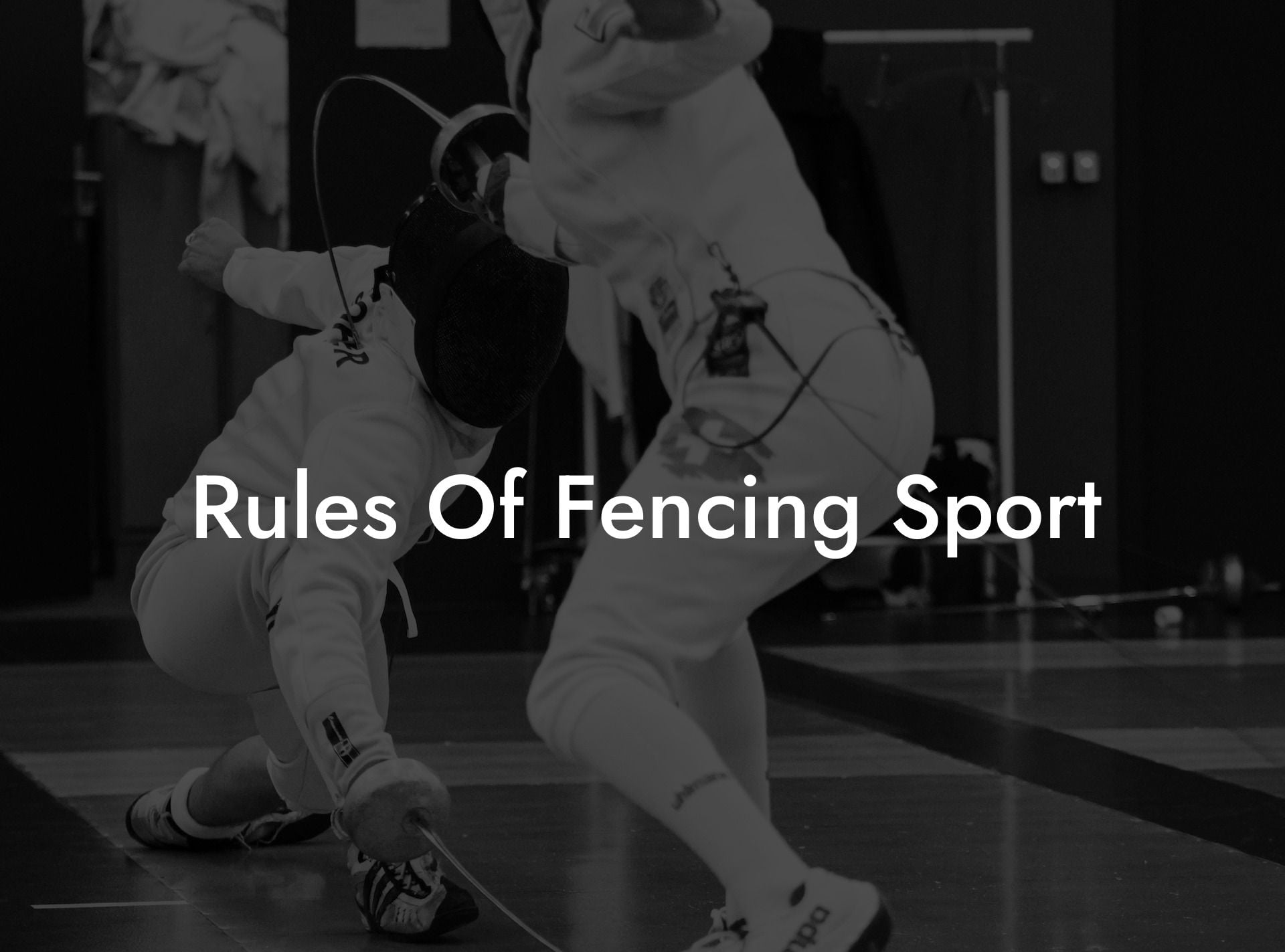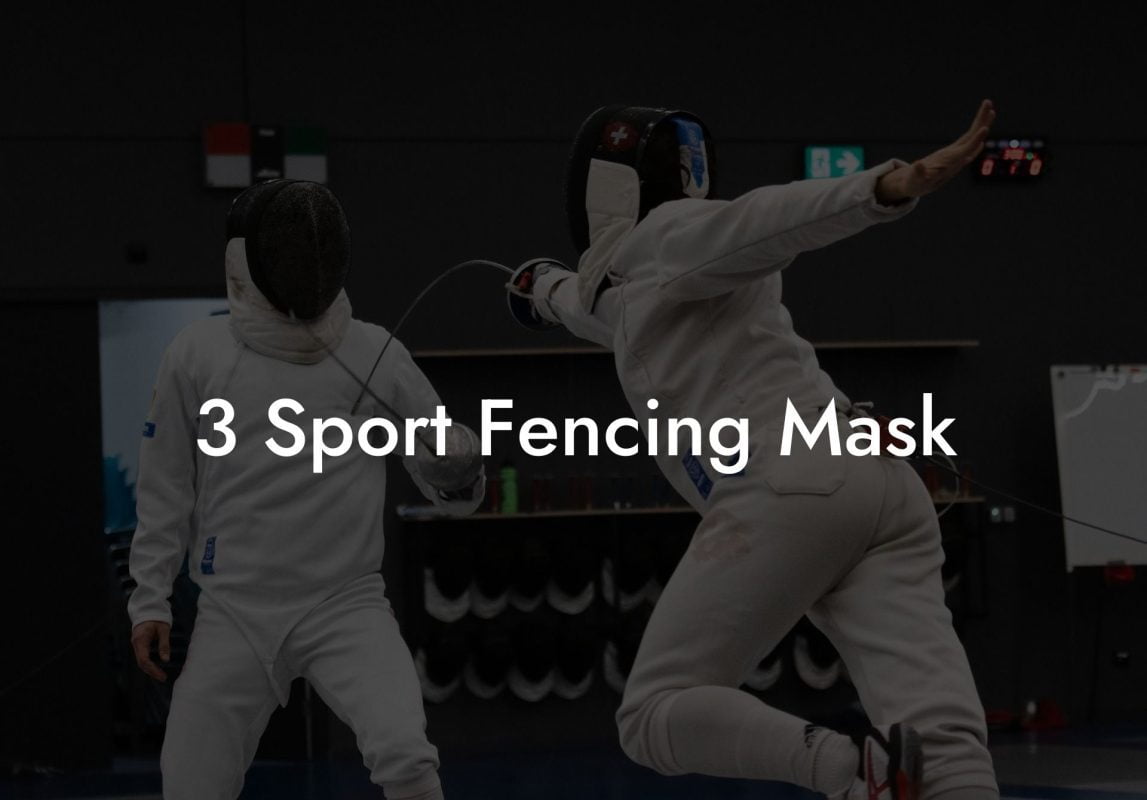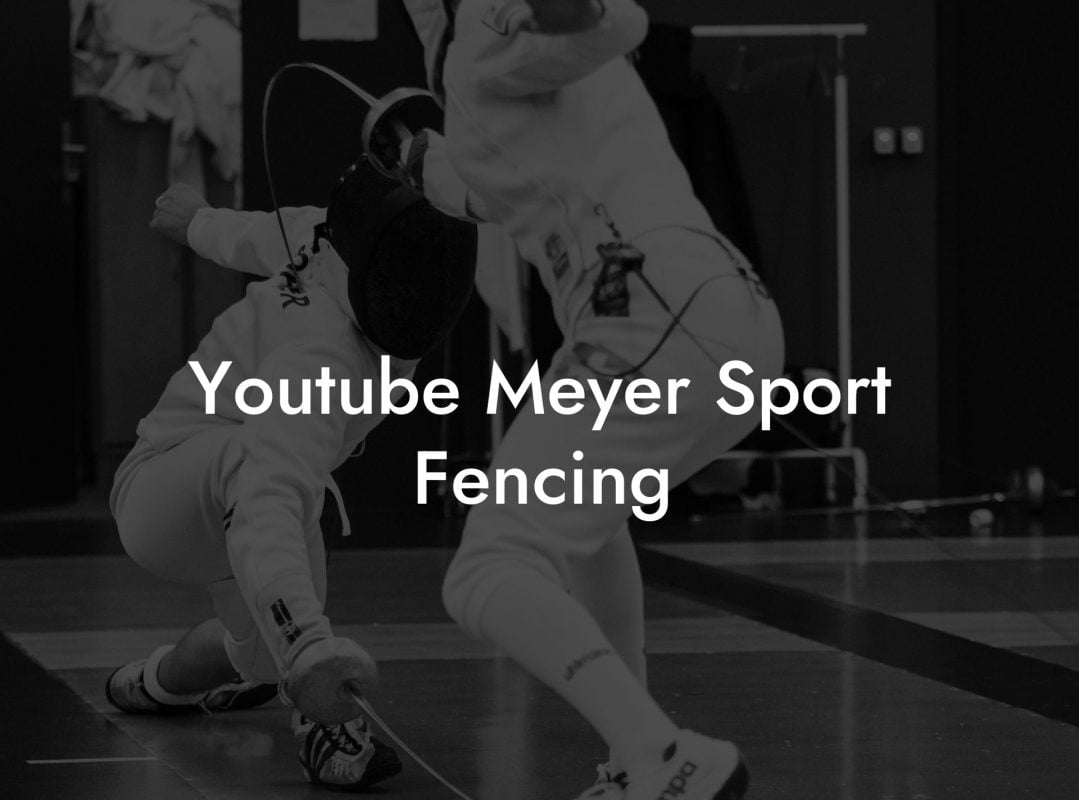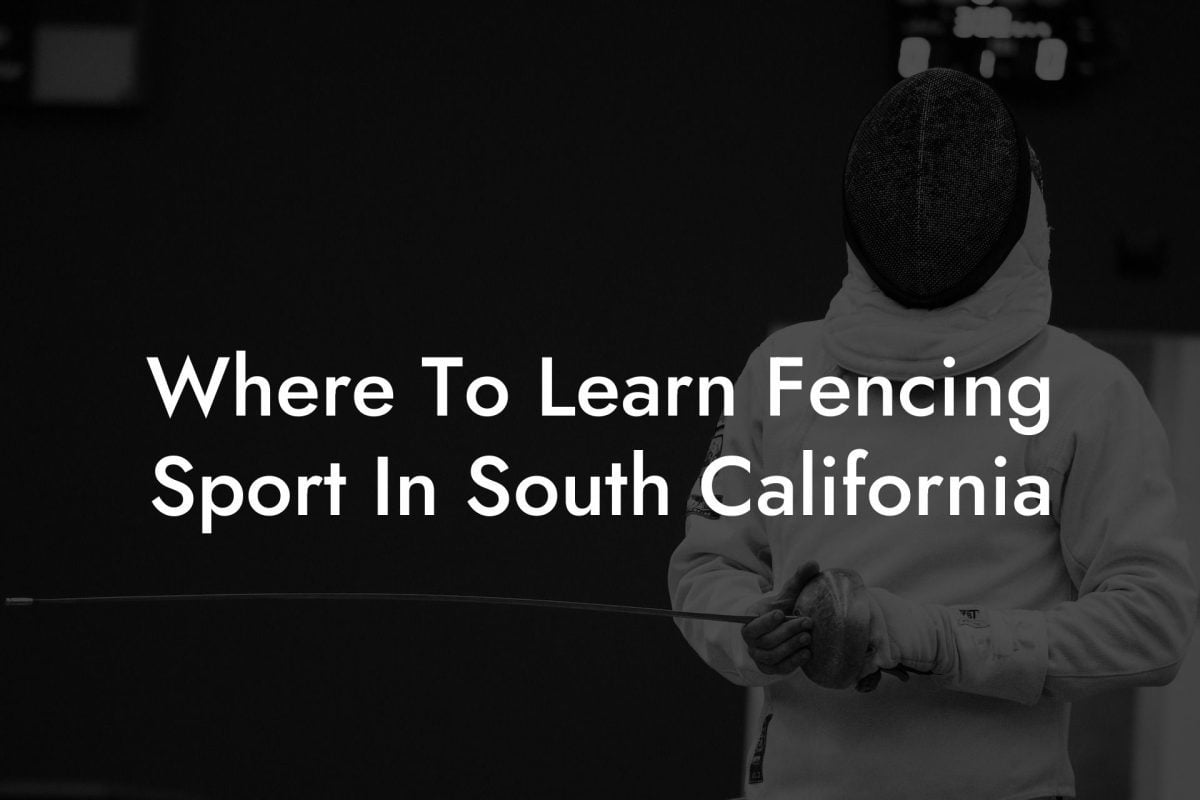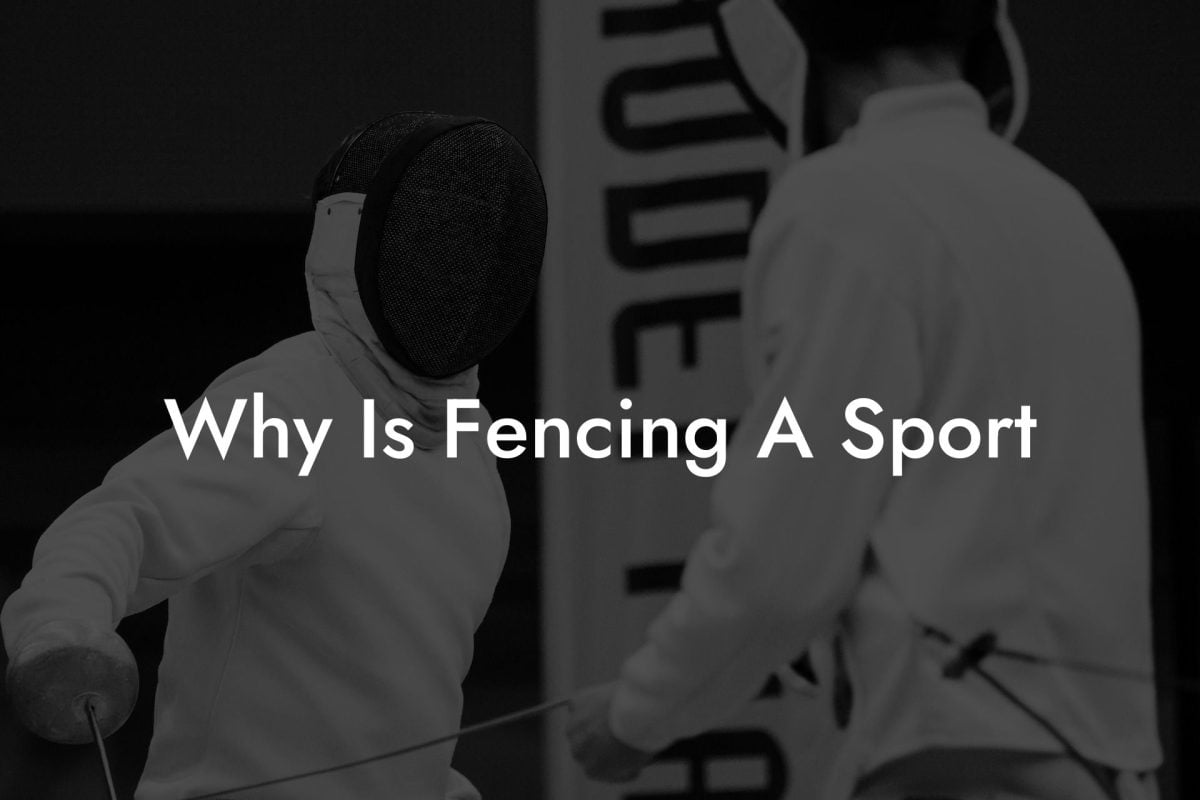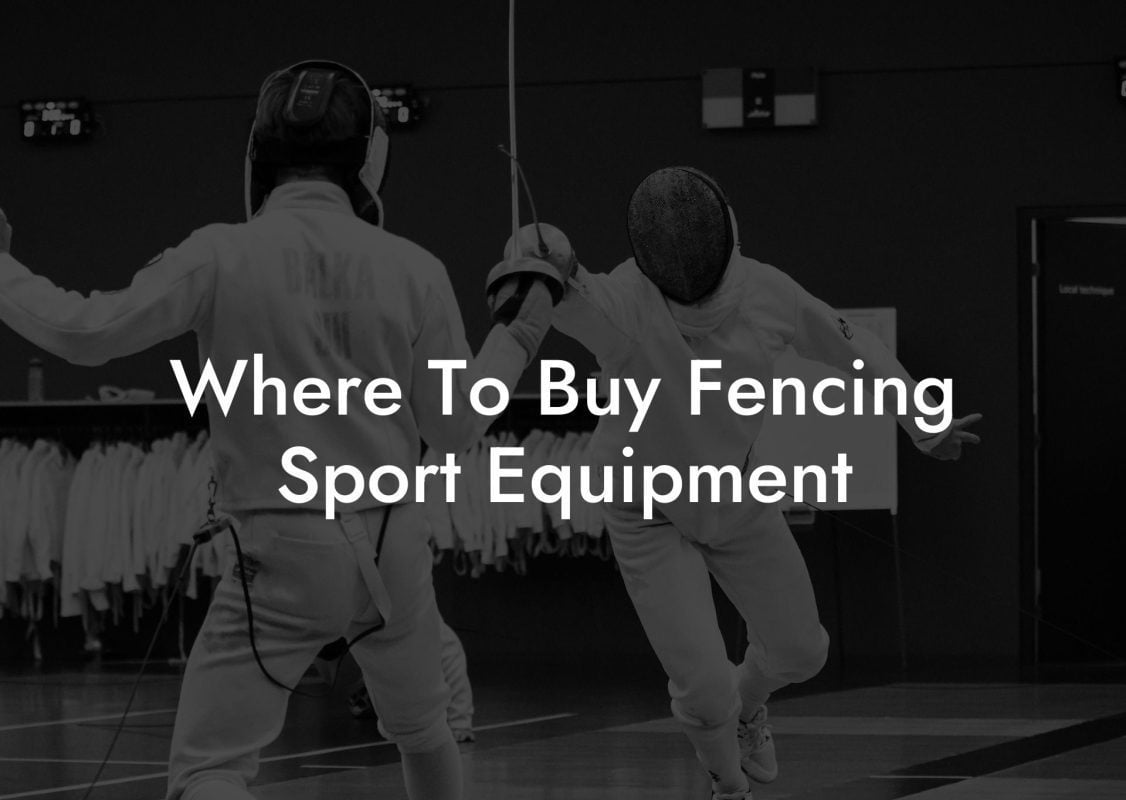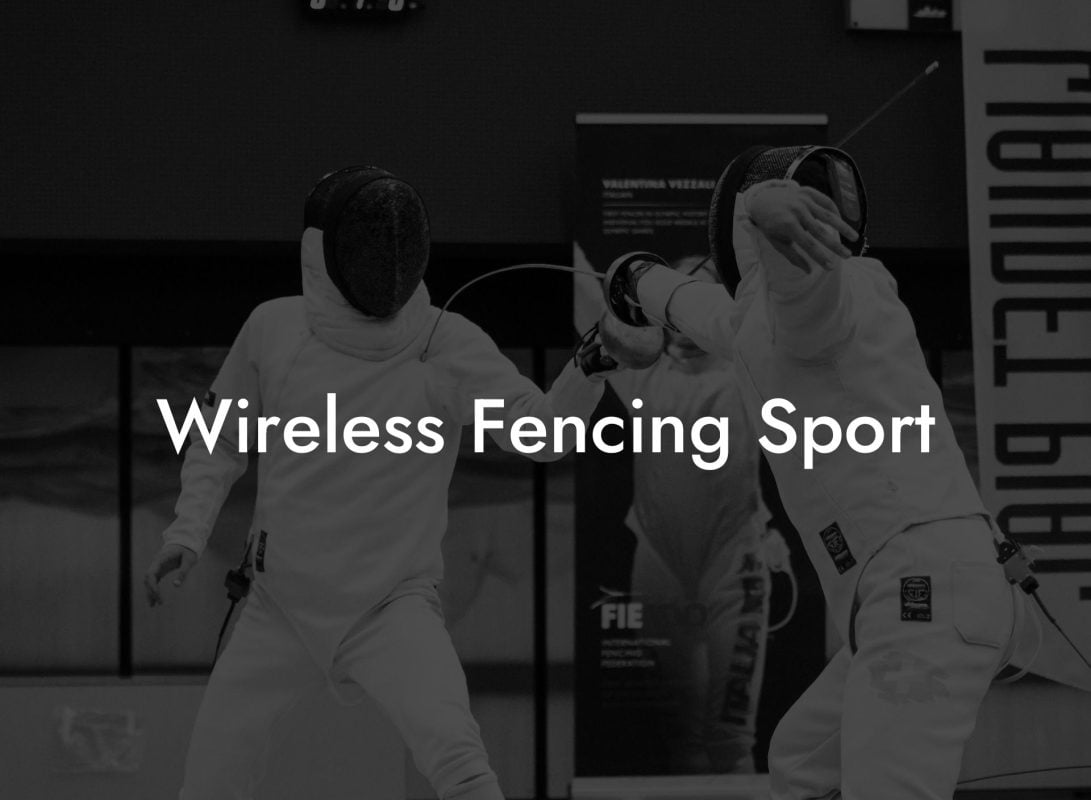Welcome to the fascinating world of fencing! If you're new to the sport or just curious about it, this comprehensive guide to the rules of fencing will help you better understand and enjoy this high-speed, competitive sport. From the foil to the sabre, the world of fencing is diverse and exciting. Ready to dive in? En garde!
Rules Of Fencing Sport Table of Contents
Overview of Fencing
Fencing is a combat sport that involves two competitors who try to score points by hitting each other with a fencing weapon - the foil, the épée, or the sabre. Each weapon has a specific set of rules, which ensure fair competition and maintain the tradition of the sport.
The Weapons
- Foil: The foil is the lightest and most flexible weapon and requires precision and skill. The target area is the torso, and a point is scored by hitting the opponent with the tip of the weapon.
- Épée: The épée is heavier than the foil and has a more substantial and rigid blade. The entire body of the opponent is the target area, and a point is scored when the tip of the weapon hits the opponent.
- Sabre: The saber is the heaviest and most aggressive weapon in fencing. The target area is the entire upper body, and a point is scored by striking the opponent with either the tip or the side of the blade.
Basic Rules
1. Attire: Fencers must wear protective gear, including a mask, a jacket, a plastron (an underarm protector), gloves, socks, and shoes. This attire is essential for safety during competition.
2. Right of Way: In foil and sabre fencing, the right of way rule determines which fencer has the right to score a point during an exchange. The fencer who initiates an attack has the right of way. If the opponent successfully deflects or parries the attack, they now have the right of way. Épée fencing does not use the right of way rule.
3. Scoring: Points are awarded when a fencer hits their opponent using the proper technique. Depending on the weapon, points may be scored with the tip of the blade or the side of the blade. The referee determines if the hit was valid and awards the point accordingly.
4. Bouts: A fencing match, known as a bout, consists of three 3-minute periods, with a 1-minute break between each period. The first fencer to reach a score of 15 points or the highest score after the final period wins the bout.
Penalties
Fencing is a disciplined sport, and penalties are enforced when a fencer commits a fault or violates the rules. Common penalties include:
- Warning (yellow card): Issued for minor infractions, such as crossing the boundary lines, using illegal equipment, or creating a disturbance during the bout. A subsequent warning will result in a penalty point for the opponent.
- Penalty Point (red card): Issued for more severe infractions or subsequent minor infractions. Penalty points are added to the opponent's score.
- Expulsion (black card): Issued for extreme violations, including physical violence or unsportsmanlike conduct. An expulsion may result in disqualification from the competition and/or future sanction.
Rules Of Fencing Sport Example:
Imagine a foil fencing bout between two fencers, Alice and Bob. Alice initiates an attack by lunging towards Bob's torso. Bob quickly parries Alice's attack and immediately launches a counterattack, successfully hitting Alice's torso. The referee, recognizing that Bob had the right of way after his successful parry, awards a point to Bob. The match continues between the two fencers, with each executing attacks, parries, and counterattacks in a bid to reach 15 points and win the bout.
Now that you've learned the basic rules of fencing, you're better equipped to understand and appreciate this captivating sport. Whether you're competing in fencing or just watching from the sidelines, it's impossible not to feel the energy and excitement of each bout. Don't forget to explore more guides on Anchorage Fencing Club, where we'll delve into techniques, equipment, and training tips for aspiring fencers! And if this article has inspired you, be sure to share it with friends and fellow fencing enthusiasts.

